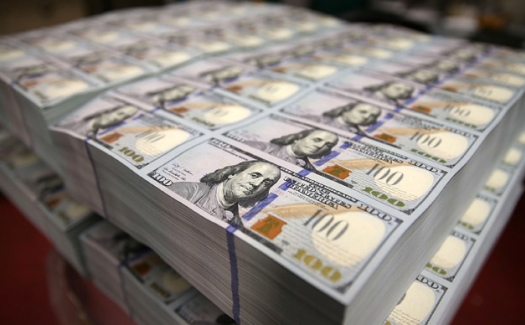
New $100 Bill Enters Circulation
A revamped $100 bill entered circulation for the first time today, with additional design features that will make it more difficult to forge.
The image of Benjamin Franklin remains on the note, but it has been modified to make it “easier for the public to authenticate but more difficult for counterfeiters to replicate,” the Federal Reserve board said.
The new bill includes a blue 3D security ribbon and ink which changes from copper to green when the note is tilted. Both features are particularly difficult to fake, according to the Fed.
The release was originally planned for 2011 but delayed after production problems caused the notes to crease and left blank spaces.
Research and development for the new note took 10 years, with the Fed, the US secret service and the Treasury department working together on the project.
US authorities say the $100 bill is the most counterfeited of all American banknotes.














Milhouse
There’s one thing I’ve never understood about this program of replacing currency with more forgery-resistant versions. Since the old notes are still valid and remain in circulation, why would the existence of the new versions bother forgers? What’s to stop them from continuing to forge the old ones?
Hope this helps
Eventually the old currency gets taken out, thus slowly depleting its supplies.
Ezra
Bills have a certain life expectancy – lower for $1 bills, higher for $100s, of course. If a couple of years from now someone is passed a fresh-looking $100 of the old kind (from 2005, say), then that would raise a red flag.
Milhouse
People, especially overseas (where the big worry is) keep $100 bills in good condition in safes or hidden away; they’ll be bringing them out for years and decades to come. So in that context it won’t be unusual. And even if it is suspicious, if they can forge the old bill accurately then the red flag won’t help.
Answer
It’s quite simple actually.
Banks swap their bills for new ones from the U.S. Mint, and the U.S. Mint burns the old ones.
This drastically limits the circulation of the old bills.
In the course of a few years, many establishments stop accepting the older bills. Also, a crisp-looking old $100 bill will raise red flags.
Even people who keep bills in a safe may have a hard time using the bills, and may have to go down to the bank to have them swapped.
Milhouse
So long as the bills are legal tender people can’t refuse to accept them. And many $100 bills are used overseas. People in Russia have stacks of the old $100 bills in safes; those will still be valid 20 years from now. And they’ll still be crisp. So a good enough forgery will appear genuine.
Mendoza
To. # 1 Millhouse
Ah lomdesha kasha
Dumb and dumber
Stating the obvious:
The old bills are slowly fazed out as they deteriorate. After a while, only new version remains in circulation.
In the interim, the remaining older bills will be given greater scrutiny (e.g. scanned by detection devices, marked with pens that detect forgery, examined more closely etc.) while the new bills can be used easier with greater confidence and peace of mind.
You are welcome for the enlightenment.
jonathan
All the banks I checked including Chase and Citibank say they won’t have any new $100 bills until next week. So just wehere are this bills making their debut?
Bitul Torah
Why waste time theorizing about currency life.
http://www.federalreserve.gov/faqs/how-long-is-the-life-span-of-us-paper-money.htm
Milhouse
15 years is just an estimate of the typical lifespan of a $100 note. If it’s sitting in a safe in Russia, it could easily last 30 years or 100 years. And it will still be valid. So why would forgers not just keep forging the old notes?
To # 5:
Just a little correction: Banks don’t get dollar bills from the US Mint, because the Mint does not produce dollar bills – they only produce coins. The office that prints paper money is called the US Bureau of Engraving and Printing.
HD
In 100 years, currency may be worthless anyway!
Brenda
Were there any of the 100 misprint bills released into circulation?